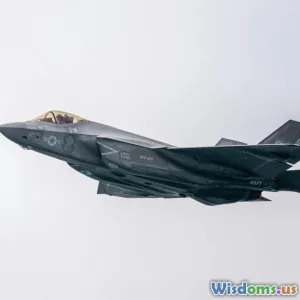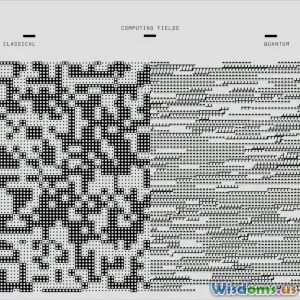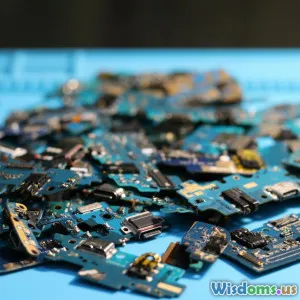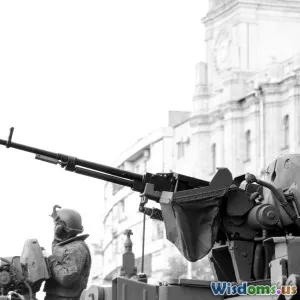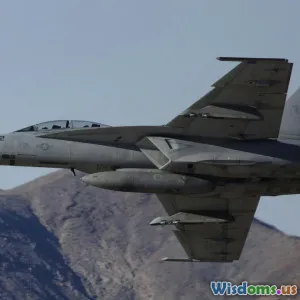
Personal Stories from Pilots Testing NextGeneration Stealth Fighters
8 min read Explore firsthand accounts from pilots testing next-gen stealth fighters, revealing cutting-edge tech and the human element behind future military aviation. (0 Reviews)
Personal Stories from Pilots Testing Next-Generation Stealth Fighters
Stealth fighters, the vanguard of modern aerial warfare, stand at the intersection of advanced military technology and human courage. But beyond the impressive design specifications and cutting-edge systems lie the fascinating personal stories of the pilots who take these aircraft to their limits. Their hands-on experiences not only validate the stealth technology but also highlight the evolving relationship between man and machine in the future battlespace.
In this article, we delve into the gripping personal accounts from pilots testing next-generation stealth fighters—illuminating the challenges, innovations, and the human factors shaping the future of military aviation.
The Dawn of a New Era: What Defines Next-Generation Stealth Fighters
Before exploring the pilots’ narratives, it’s important to understand the core innovations defining these aircraft. Unlike previous stealth platforms, next-gen fighters incorporate not only radar cross-section minimization but also enhanced electronic warfare capabilities, sensor fusion, artificial intelligence (AI)-augmented decision making, and supercruise abilities.
For example, programs like the USAF's NGAD (Next Generation Air Dominance) craft and the U.S. Navy's F/A-XX emphasize adaptability, advanced avionics, and networking prowess to operate seamlessly within a multi-domain battle environment.
Real-World Tech Impact
Pilots often highlight how integrated sensor suites provide real-time battlefield awareness unimaginable just a decade ago. As Lt. Col. Sarah Miller, an NGAD test pilot, remarked in a recent interview, "The cockpit becomes an ecosystem. You’re not just piloting the aircraft anymore—you’re orchestrating vast streams of data, making split-second decisions backed by AI algorithms that filter information for you. It’s as if the plane anticipates your needs."
Personal Pillars: Inside the Cockpit with Test Pilots
Central to these advanced platforms are the intrepid aviators who push prototypes through rigorous flight envelopes. Their stories reveal the blend of technical mastery, physical endurance, and mental agility required.
Thrill Meets Precision: Mission Insights
Capt. Jason Rivera, a seasoned stealth fighter pilot testing a next-gen jet, recounted his first supercruise flight: "Reaching supersonic speeds without afterburners and staying undetected felt surreal—yet stressful. Your body notices the acceleration and maneuvering stresses immediately, but so does your mind when you have multiple data streams vying for attention. Training helps, but each flight pushes your cognitive limits."
He described testing advanced stealth coating durability under various weather conditions and high-G turns, noting that “the aircraft’s responsiveness at the edge of its flight envelope assures mission survivability but demands a symbiotic trust between pilot and aircraft.”
Human Factors: Coping with High-Tech Complexity
With increasingly sophisticated systems, maintaining pilot situational awareness remains paramount. Test pilots frequently face the challenge of balancing tech reliance and preserving manual skill. Lt. Col. Miller explained, "There’s a thin line where augmented reality and automation aid decision-making without letting you become a passive operator. Developing intuitive human-machine interfaces is critical."
One memorable experience she recounted involved an unexpected system alert during a simulated combat scenario, forcing rapid manual override capabilities that tested her training and improvisational skills.
Psychological Challenges: Beyond Physical Limits
Flying a stealth fighter is not just about technical challenges. The psychological toll is significant, especially when test scenarios mimic real-world threats and require near-perfect execution under stress.
Dr. Alan Peters, psychologist specializing in aviation human factors, highlighted that "test pilots undergo immense mental conditioning. The inherent risks in experimental flights, coupled with mission uncertainty, can induce stress levels comparable with frontline combat pilots. Support systems and resilience training are central to their success."
For instance, Capt. Rivera shared that, post-flight, debrief sessions were as crucial as the missions themselves. “We dissect every action, every data readout, looking for both technical flaws and cognitive slips. There's no margin for error when integrating unproven tech aboard these lethal machines.”
Bridging the Gap: Feedback Loops Shaping Design Evolution
Pilots don’t simply fly these stealth fighters—they help engineer them. Feedback from flight testing fundamentally shapes iterative design improvements.
Real-Time Data Integration
Modern test programs utilize telemetry that transmits pilot biometrics (heart rate, responses) and environmental parameters live to ground engineers. Lt. Col. Miller noted, "When I’m airborne, the engineers on the ground monitor physiological strain and system performance, allowing us to tweak everything from cockpit ergonomics to control sensitivity in near real-time."
Pilot-Centric Innovations
These close collaborations influenced the adoption of virtual reality training modules simulating next-gen fighter interfaces and introduced adaptive helmet-mounted displays providing intuitive data overlays. Miller commented, "Such features come directly from the cockpit’s 'felt experience.' Our lived challenges shape tech evolution."
Looking Forward: How These Pilots Are Shaping Military Aviation
The feedback, insight, and bravery demonstrated by these test pilots serve as a foundation for the future battlefield. Their stories embody a crucial truth: The next leap in stealth fighter capability depends equally on human ingenuity as on technological advancement.
Expanding Multidomain Integration
Pilots anticipate future joints fights involving drones, cyber warfare, and space assets. Capt. Rivera envisioned scenarios where "pilots won’t just fly stealth fighters; they’ll command swarms of unmanned systems with precise coordination enabled by AI, creating unparalleled battlefield awareness and lethality."
Preparing The Next Generation
These accounts also underscore the importance of training future pilots capable of leveraging such powerful systems effectively. Simulation centers and AI-enhanced training environments are increasingly crucial.
Conclusion
The personal stories from pilots testing next-generation stealth fighters highlight an extraordinary synthesis of human performance and sophisticated military technology. These narratives reveal the intense physical, cognitive, and psychological demands placed on pilots tasked with validating aircraft that will define air superiority in decades to come.
Their experiences reflect not merely a technological leap but the dawn of a transformed battlefield where pilot, machine, and AI coexist as an integrated warrior system. Understanding these human dimensions provides valuable insight into military aviation's future—insights that inspire confidence, caution, and admiration in equal measure.
As stealth fighters continue to evolve, it’s the pilots' pioneering spirits that ensure these machines achieve their full potential in protecting national security worldwide.
Rate the Post
User Reviews
Popular Posts











